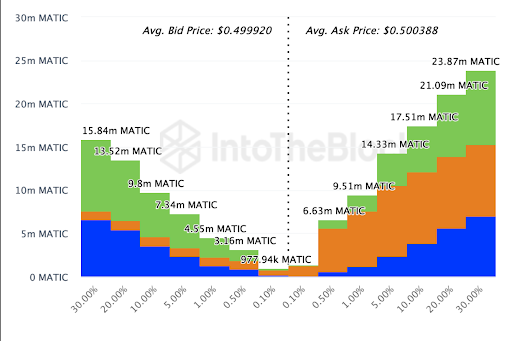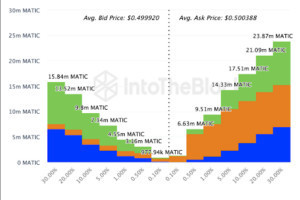- Haust Network uses Polygon’s Chain Development Kit and zk-rollup technology.
- The AggLayer integration allows Haust Network to connect to multiple blockchains for efficient and low-cost transactions.
Haust Network will integrate with the Polygon Chain Development Kit (CDK) to advance its Layer 2 Ethereum scaling solutions, according to a recent announcement. This partnership uses zk-rollup technology to increase transaction throughput and reduce costs while ensuring robust network security.
https://Twiter.com/0xPolygon/status/1819110730802635148
Haust Network has also integrated Polygon’s CDK, a popular Layer 2 solution for Ethereum scaling based on zk-rollup. This approach increases the number of transactions per unit time while reducing costs while maintaining the level of security. With the help of zk-Rollup, Haust Network can process a larger number of transactions effectively and cheaply.
Being an Application Absolute Liquidity Layer 2 Ethereum Virtual Machine (EVM) based network, the Haust Network is built to be secure by integrating zk-rollup technology and Account Abstraction. This configuration makes it easy to work and achieve better results in managing the given processes.
The impact of AggLayer on transaction efficiency
It should be noted that Haust Network is related to AggLayer the Polygon aggregation layer. AggLayer is a complex of tools that allow the integration of different blockchains, increasing the level of security and the speed of transactions. It minimizes the number of calculations required and the number of transactions required, making transactions cheaper and faster for users.
AggLayer allows a blockchain to be integrated with other chains through a single gateway to Ethereum. Some of these integrated systems include the OKX’s X Layer, Astar zkEVM, and Polygon zkEVM. By integrating AggLayer, Haust Network achieves improved throughput and lower costs to overcome challenges associated with expensive transactions and limited user engagement.
The implementation of AggLayer also improves Haust Network’s lending and borrowing functionality. With the addition of these services, Haust Network aims to become a major participant in the decentralized finance (DeFi) sector. AggLayer’s features enable more efficient and reliable interactions between different blockchain systems.
Polygon’s MATIC is facing a potential downturn
Currently, MATIC is trading at $0.48as a result of a 13% And 2% decrease in the past month and 24 hours respectively. The token’s future performance appears uncertain as recent data indicates significant selling pressure and reduced institutional support.

Polygon Exchange On-Chain Market Depth. Source: IntoTheBlock
Net flows from major investors fell 220% last week, pointing to declining institutional investment. According to Netflow, the activity of large investors is monitored and a decline indicates that there is more distribution than accumulation. MATIC, which was popular with institutions, is now facing doubts from this critical group that could change the price.
MATIC has failed to break the downtrend line since June 6, showing a bearish market. This trendline resistance indicates that MATIC may experience more selling pressure unless there is a sharp price decline.

